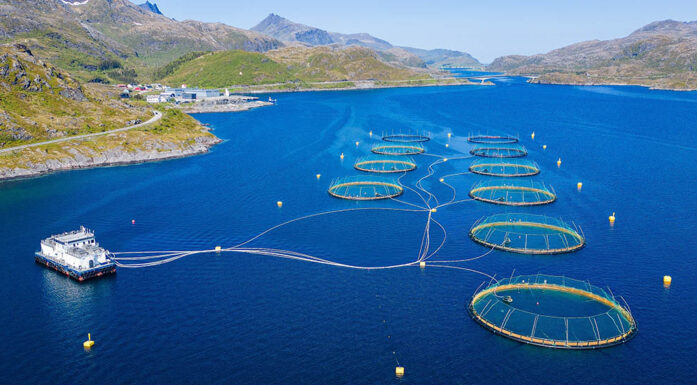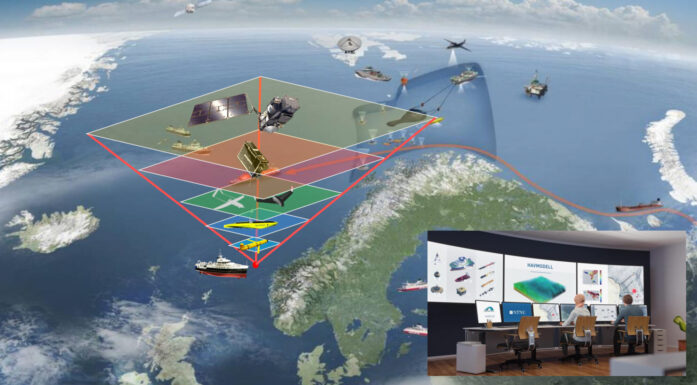Our green future must include industry
Researcher Markus Steen says research alone isn’t enough to make Norway’s economy greener. Industry needs to be more deeply involved with the research community at an early stage.
By Markus Steen, a PhD candidate in geography at NTNU and a researcher at SINTEF’s Department of Industrial Management. Steen also has ties to the national Centre for Sustainable Energy Studies, which is hosted by NTNU.
“We can research until our faces turn blue — or green — but it won’t necessarily help make the shift to a greener society,” says researcher Markus Steen. He believes that research alone isn’t enough— industry needs to be included on the team from the very beginning.
This winter, the Norwegian government announced its plans to increase support for research and innovation to help aid the shift towards a greener society. Increasing research funding is important to help technology development and to cut costs, but is unfortunately not enough to solve the challenges we are facing. We can research until our faces turn blue, but it doesn’t mean that we will be able to change to a more sustainable way of living.
Norway has to build its own knowledge and expertise
How do we know that more money for research is such an important ingredient in developing green technology and industry in Norway? One of the goals for a greener society is to help economic growth and create jobs in technological innovation. But what precedence do we have in Norway that can help with the green changeover, while also stimulating the economy and creating new jobs?
Norway’s government-funded strategy for research, development, demonstration and commercialization of new energy technology, called Energi21, is based on the idea that Norway will take advantage of, and build on expertise that has been developed over the years in the hydropower and petro-maritime industries. Another important fundamental assumption is that the country’s industries and engineers will be able to rely on previous knowledge that can be adapted and combined in different ways to suit new situations and contexts.
Do we need large-scale research to achieve this? Maybe. Research undoubtedly plays an important role when it comes to recycling expertise. But it is also important that Norway (and other countries) does more to actually use environmental technology. This requires active political measures that gives green development more concrete content.
Why is this important? The green changeover is dependent on a number of innovations, including new technologies to convert renewable energy to electricity or fuel, new battery technologies for the transport sector, new ways of transporting and distributing energy, and improving energy efficiency. But with these innovations in technology follows a need for change and innovation in value chains, user practices, regulations and business models. New, promising, research based technology is, in other words, not enough for things to happen.
Innovation though collaboration
Research on innovation, change and industrial development differentiates between two different strategies for innovation. The first is called STI (science, technology, innovation), and is characterized by a linear understanding of innovation, where it comes from research and is commercialized directly. This is a so-called “top-down” strategy that often has radical innovation and technological breakthroughs as its main goal. The main parties included in this type of strategy are research institutions, universities and large companies with separate research and development divisions.
The other common strategy for innovation is called DUI (doing, using, interacting). DUI focuses on an interactive understanding of innovation, where innovations come from a collaboration between different companies and other institutions, often as a result of practical problem solving. In this case, innovations come from the ground up, mainly based on established knowledge, and lead to gradual change along pre-established paths. If you think in terms of research and development, development is the main focus.
Norwegian policies that contribute to a green changeover are in many ways very STI oriented. The idea that pooling money for research at one end will produce new products and solutions at the other is not uncommon, especially among politicians. The problem isn’t that Norwegian politics under-supports STI-based innovation, it is that funds for DUI processes are missing, and because of this we are missing important synergies between research and the industry.
Need to create environments to promote interactive learning
So what should the government do if it is serious in its ambitions of Norway contributing to a green changeover through innovation and technological development? Increasing funds for research is important, but we also need a way of getting our research results out and in use commercially. We know from research on new industries that access to market is decisive in creating positive growth. Research says that research alone is not enough!
It is important to create environments and markets to promote the growth of interactive learning processes among industry, research and development, and regulating authorities. Norwegian industry cannot compete on the basis of low costs, but it does well in hard international competition nevertheless. Norway’s land-based and offshore industries have different types of expertise that are incredibly relevant to a green changeover. When we don’t allow for DUI processes in green innovation and technology development, we miss out on a lot of potential solutions that could be created by Norwegian heads and hands. Without active measures to secure growth in green niches and increased demand for new solutions, any contributions made by research to economic growth and the green changeover may be in the worst case totally useless. One example of a concrete measure is to increase funds towards expensive and potentially risky pilot and demonstration projects, such as in maritime renewable energy. Realizing projects like this can also be very important because they can help set different types of new knowledge to work.
In other words, the green changeover requires more than just a change of pace, it also requires a change in direction and political support in several different areas. New thinking in the energy and industrial political toolbox is important so that political support for innovation gives the results it promises.
This opinion piece was originally published in Norwegian on the blog sysla.no.





